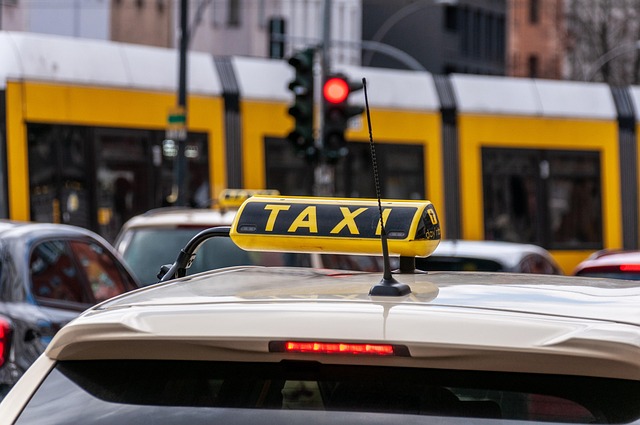Looking to register your car in California? This comprehensive guide breaks down the process step-by-step, ensuring a smooth experience. From understanding key requirements and gathering essential documents to visiting the DMV and verifying your Vehicle Identification Number (VIN) accuracy, we cover it all. Follow these clear instructions to complete your vehicle registration efficiently using trusted tools like a dmv vin verifier.
- Understand California Car Registration Requirements
- Gather Necessary Documents for Registration
- Visit the DMV to Register Your Vehicle
- Verify Vehicle Identification Number (VIN) Accuracy
- Complete and Submit the Registration Application
Understand California Car Registration Requirements

Before registering your car in California, it’s crucial to understand the state’s specific requirements. The California Department of Motor Vehicles (DMV) mandates that all vehicles operated within the state be properly registered and bear valid license plates. One essential aspect is ensuring your vehicle’s Vehicle Identification Number (VIN) is accurately verified. This process involves a meticulous inspection to confirm the VIN’s authenticity, which can be accomplished through various means, including a DMV vin verifier or even a mobile vin verifier for those seeking a more convenient option.
Additionally, a thorough vin inspection ensures that your car meets all safety and emission standards set by the state. This step is vital to avoid legal issues and potential fines. Whether you’re opting for a traditional or mobile vin verification service, ensuring your vehicle’s compliance with California’s registration criteria is the first step towards smooth and legitimate ownership.
Gather Necessary Documents for Registration

Before you begin the registration process, ensure you have all the essential documents ready. The California Department of Motor Vehicles (DMV) requires specific paperwork for a smooth and efficient registration. One crucial document is the Vehicle Identification Number (VIN) verifier, which can be obtained through a mobile VIN verification or by visiting a DMV office for a vin inspection. This process confirms the vehicle’s identity and ensures it complies with regulations.
Gathering these documents is an essential step in the car registration journey. A valid driver’s license, proof of insurance, and the vehicle’s title are also required. Additionally, you may need to provide a completed registration application form, which can be acquired from the DMV or downloaded online. Don’t forget to bring any necessary fees for processing the registration, making the entire process seamless and successful.
Visit the DMV to Register Your Vehicle

To officially register your vehicle in California, one of the key steps is to visit a Department of Motor Vehicles (DMV) office. This is where you’ll initiate the registration process and ensure that your car meets all necessary legal standards. Bring along essential documents like proof of ownership, which could be a purchase agreement or previous registration records. The DMV staff will guide you through the requirements, which include providing detailed vehicle information such as make, model, year, and color. They’ll also conduct a Vehicle Identification Number (VIN) verification to ensure authenticity.
Utilizing a mobile VIN verifier can streamline this process further. This service enables you to check your car’s history remotely, which includes verifying the VIN and inspecting for any outstanding issues or accidents reported by various data sources. With this information at hand, you’ll be better prepared during your visit to the DMV, ensuring a smoother registration experience in California.
Verify Vehicle Identification Number (VIN) Accuracy

Before registering your car in California, ensuring the Vehicle Identification Number (VIN) is accurate is paramount. A correct VIN is critical for identifying your vehicle and accessing its history, which is essential during the registration process. The California Department of Motor Vehicles (DMV) recommends using a reliable vin inspection tool to verify this number. There are various mobile vin verifiers available that can quickly cross-reference your VIN with national databases to ensure it matches the records on file.
One practical option is a mobile vin verification service, which allows you to check your vehicle’s history from the convenience of your smartphone or computer. These services often provide instant results, giving you peace of mind and ensuring any potential issues are identified before submitting your registration application at the DMV. This step might seem straightforward, but it’s an integral part of the car registration process in California.
Complete and Submit the Registration Application

After gathering all necessary documents, it’s time to complete and submit your California car registration application. The process begins with filling out Form DV304, which requires detailed information about your vehicle, including its make, model, year, and unique Vehicle Identification Number (VIN). This VIN is crucial for identifying your car and must be accurately entered, as it undergoes a rigorous verification process by the DMV’s vin verifier system.
Ensure that all details are correct and up-to-date before submission. You can opt for traditional methods or leverage modern alternatives like mobile VIN inspection services to simplify the process. These services allow you to verify your VIN digitally, saving time and effort while ensuring accuracy. Once submitted, the DMV will process your application, which may include a vehicle inspection in some cases, before issuing your official registration paperwork.
Registering a car in California involves understanding state requirements, gathering essential documents, and visiting a DMV office. By verifying your vehicle’s Identification Number (VIN) using a reliable dmv vin verifier, ensuring accuracy throughout the process, and completing the registration application diligently, you can successfully register your vehicle and hit the road legally.
